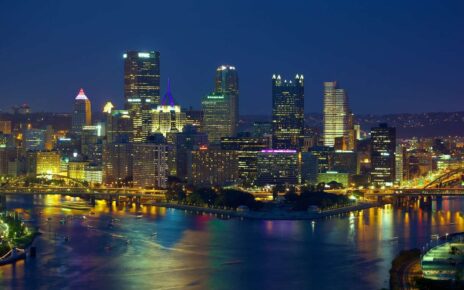The Badrinath and Kedarnath Yatra, part of the larger Char Dham pilgrimage in Uttarakhand, India, is a deeply spiritual journey that takes pilgrims through some of the most breathtaking landscapes and sacred sites in the Himalayas. This journey not only offers religious fulfillment but also provides a unique opportunity to explore the natural beauty and cultural richness of the region. Here’s a comprehensive guide to places you can visit during your Badrinath and Kedarnath sacred yatra.
Badrinath Yatra
1. Badrinath Temple
The primary destination of the Badrinath Yatra is the Badrinath Temple, dedicated to Lord Vishnu. Nestled between the Nar and Narayan mountain ranges, the temple stands at an elevation of 3,133 meters and is one of the 108 Divya Desams, holy shrines for Vaishnavites. The temple’s architecture, with its imposing facade and intricately carved walls, complements the stunning natural surroundings.
2. Tapt Kund
Located near the Badrinath Temple, Tapt Kund is a natural hot water spring where pilgrims take a dip before entering the temple. The water is believed to have medicinal properties, and bathing here is considered to purify the soul.
3. Brahma Kapal
Brahma Kapal is a flat platform on the banks of the Alaknanda River. It holds immense religious significance as it is believed that Lord Brahma resides here. Pilgrims perform rituals and pay homage to their ancestors at this spot.
4. Neelkanth Peak
For those inclined towards trekking and nature, the Neelkanth Peak is a must-visit. Standing at 6,597 meters, it offers a spectacular view, especially at sunrise when the first rays of the sun illuminate the snow-clad peak, creating a divine aura.
5. Mana Village
Just 3 km from Badrinath, Mana Village is the last Indian village before the Tibet-China border. This picturesque village is inhabited by the Indo-Mongolian tribe and offers a glimpse into their unique culture. The village is also home to the famous Vyas Gufa and Ganesh Gufa, ancient caves where sage Vyasa is believed to have composed the Mahabharata.
6. Vasudhara Falls
Situated 9 km from Badrinath, Vasudhara Falls is a beautiful waterfall that cascades down from a height of 400 feet. The trek to the falls is challenging but rewarding, offering panoramic views of the surrounding mountains.
7. Charan Paduka
Located 3 km from Badrinath, Charan Paduka is a rock believed to bear the footprints of Lord Vishnu. It’s a short yet steep trek, and the place provides a serene atmosphere along with splendid views of the valley.
8. Alka Puri
Alka Puri is the glacier from where the Alaknanda River originates. It is around 15 km from Badrinath and offers mesmerizing views of the snow-clad mountains and the glacier itself.
9. Satopanth Tal
Satopanth Tal is a high-altitude lake situated about 22 km from Badrinath. The trek to the lake is quite demanding, passing through lush meadows, rocky terrains, and glacial paths. The serene, emerald-green waters of the lake are said to be a trinity of Brahma, Vishnu, and Shiva.
Kedarnath Yatra
1. Kedarnath Temple
The Kedarnath Temple, dedicated to Lord Shiva, is the main attraction of the Kedarnath Yatra. Located at an altitude of 3,583 meters, it is one of the twelve Jyotirlingas and is surrounded by breathtaking snow-capped peaks. The temple’s history dates back over a thousand years, and its spiritual ambiance draws devotees from all over the world.
2. Bhairav Temple
Situated near the Kedarnath Temple, Bhairav Temple is dedicated to Bhairav, a fierce manifestation of Lord Shiva. The temple offers panoramic views of the surrounding valleys and mountains. It is believed that Bhairav protects the Kedarnath Temple during the harsh winter months when it is closed.
3. Vasuki Tal
Located 8 km from Kedarnath, Vasuki Tal is a glacial lake that offers stunning views of the surrounding Himalayan peaks. The trek to Vasuki Tal is challenging, traversing through rocky paths and high-altitude terrains, but the serene beauty of the lake makes it worthwhile.
4. Gandhi Sarovar
Also known as Chorabari Tal, Gandhi Sarovar is a small crystal-clear lake situated at the foot of the Chorabari Bamak glacier. It is around 3 km from Kedarnath and offers a tranquil retreat for visitors. The lake is named after Mahatma Gandhi, whose ashes were immersed here.
5. Shankaracharya Samadhi
Adjacent to the Kedarnath Temple is the samadhi (final resting place) of Adi Shankaracharya, the 8th-century philosopher and theologian who played a crucial role in reviving Hinduism. It is believed that Shankaracharya attained nirvana at this place at the age of 32.
6. Triyuginarayan Temple
Situated about 25 km from Kedarnath, Triyuginarayan Temple is believed to be the place where Lord Shiva and Goddess Parvati were married. The perpetual fire in front of the temple is said to have been burning since their wedding, and hence the place is also known as Akhand Dhuni temple.
Other Notable Attractions En Route
1. Rishikesh
Often referred to as the “Yoga Capital of the World,” Rishikesh is a gateway to the Char Dham Yatra. Pilgrims can visit the numerous ashrams, participate in yoga and meditation sessions, and enjoy the serene ambiance by the Ganges. Key attractions include the Laxman Jhula, Ram Jhula, and Triveni Ghat.
2. Devprayag
Devprayag is the sacred confluence of the Alaknanda and Bhagirathi rivers, which together form the Ganges. The town is famous for the Raghunathji Temple and offers a spiritual atmosphere along with scenic beauty.
3. Rudraprayag
Rudraprayag is another important confluence where the Alaknanda meets the Mandakini River. The place is named after Lord Shiva, and the Rudranath Temple is a major attraction here.
4. Guptkashi
Located on the way to Kedarnath, Guptkashi is famous for the ancient Vishwanath Temple dedicated to Lord Shiva and the Ardhanarishvara Temple. The town offers a picturesque setting with views of the Chaukhamba range.
5. Chopta
Known as the “Mini Switzerland of India,” Chopta is a beautiful hill station located on the way to Kedarnath. It serves as the base for the trek to Tungnath, the highest Shiva temple in the world, and further to Chandrashila peak, which offers panoramic views of the Himalayas.
6. Ukhimath
Ukhimath is the winter seat of the Kedarnath deity when the Kedarnath Temple is closed during winter. The Omkareshwar Temple in Ukhimath is worth visiting, and the town offers stunning views of the Kedarnath and Neelkanth peaks.
Travel Tips
- Best Time to Visit: The ideal time for the Badrinath and Kedarnath Yatra is from May to October, avoiding the monsoon months (July and August) due to the risk of landslides.
- Altitude Sickness: Be prepared for high altitudes by acclimatizing yourself properly. Stay hydrated and avoid overexertion.
- Weather: Carry warm clothing, as temperatures can drop significantly, especially at night.
- Health Precautions: Ensure you are physically fit for the treks. Carry basic medication and a first-aid kit.
- Permits: Obtain necessary permits and check for any travel advisories or regulations.
- How to Reach: Experience the Badrinath Kedarnath Yatra by helicopter for a swift and scenic pilgrimage, starting from Dehradun or Phata. Enjoy a comfortable journey, avoiding long treks and road travel.
Conclusion
The Badrinath and Kedarnath Yatra is a journey that offers much more than just a religious experience. It provides an opportunity to explore the majestic beauty of the Himalayas, delve into ancient traditions, and experience the serene spirituality of these sacred places. Whether you are a devout pilgrim or a nature enthusiast, this yatra promises a memorable and enriching experience.




